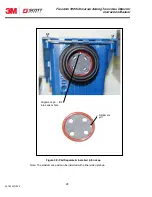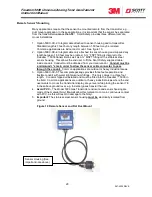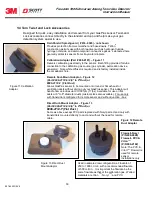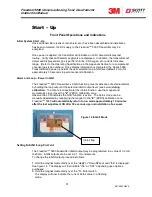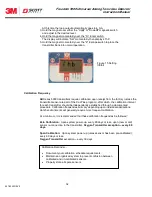
17
087-0020 REV
E
Gas Specificity
Each gas sensor is engineered and designed to be gas specific;
however, the very nature of electrochemical gas detection is such that
the presence of certain gases may act as an interferent to certain
sensors. Each sensor can have its own interferent(s), causing the sensor
to respond electrochemically. Scott Safety has tested and documented
some of the known interferents. These are listed in an Addendum
located in the back of the manual.
Sensor Accuracy
The accuracy of a toxic gas sensing system is limited by the accuracy of
999the standard used to calibrate the system. For many toxic gases,
obtaining a high accuracy standard that is suitable for field calibration
use may be difficult (about the best accuracy of gas concentration
achievable is 5%, using a permeation system with good temperature
control). For this reason, no fixed accuracy statement is possible. The
accuracy of the GasPlus sensor cannot be better than the accuracy of
the calibration gas. The best accuracy to be expected, assuming a
perfect standard, is limited by the repeatability which is
±
2% of span (full
scale) and linearity which is
±
2% of span.
Sensor Response Times
Electrochemical Gas sensors are optimized to give the fastest possible
response time while maintaining excellent zero stability and minimum
drift (approximate sensor response times are available from Scott
Safety). If response time appears to be slow, refer to the “Weekly
Operational Checks” within the
System Operation
section.
Sensor Life
Because applications are of such a variable nature, only experience in
the given application or plant condition will determine the best
replacement frequency. GasPlus sensors will generally provide a
minimum of 12 months of service in ambient air gas detection
applications. Extremes of humidity and temperature, and exposure to
dirty atmospheres containing particulate matter or oily vapors will
decrease sensor life. In addition, extended exposure to target or other
active gases may shorten sensor life. In applications where only trace
levels of target gas exist, except under leak conditions, sensor life will
most likely be over 18 months.
Scott Safety recommends that you calibrate sensors periodically and
check the calibration factor of the sensor after each calibration to make
sure that the sensor will last until the next calibration cycle. Sensors with
a calibration factor of 250 or less are approaching the end of their useful
life and should be replaced.
.
Sensor battery failure
does not render the
sensor useless but it will
require a 4-8 hour warm-
up time upon installation.
Freedom 5000 Universal Analog Toxic Gas Detector
Instruction Manual


























